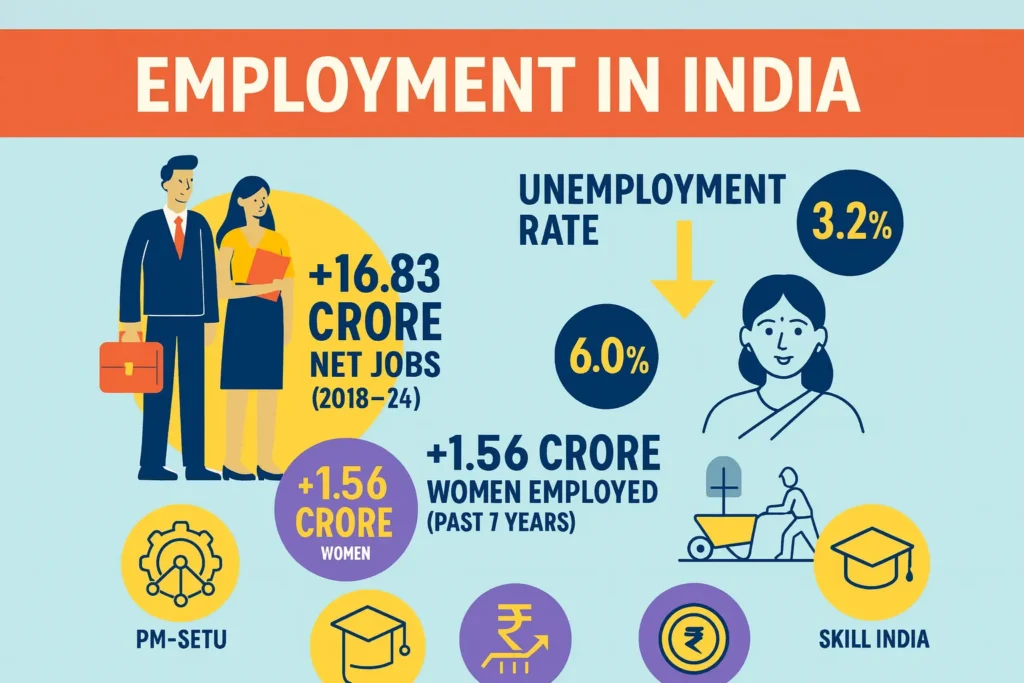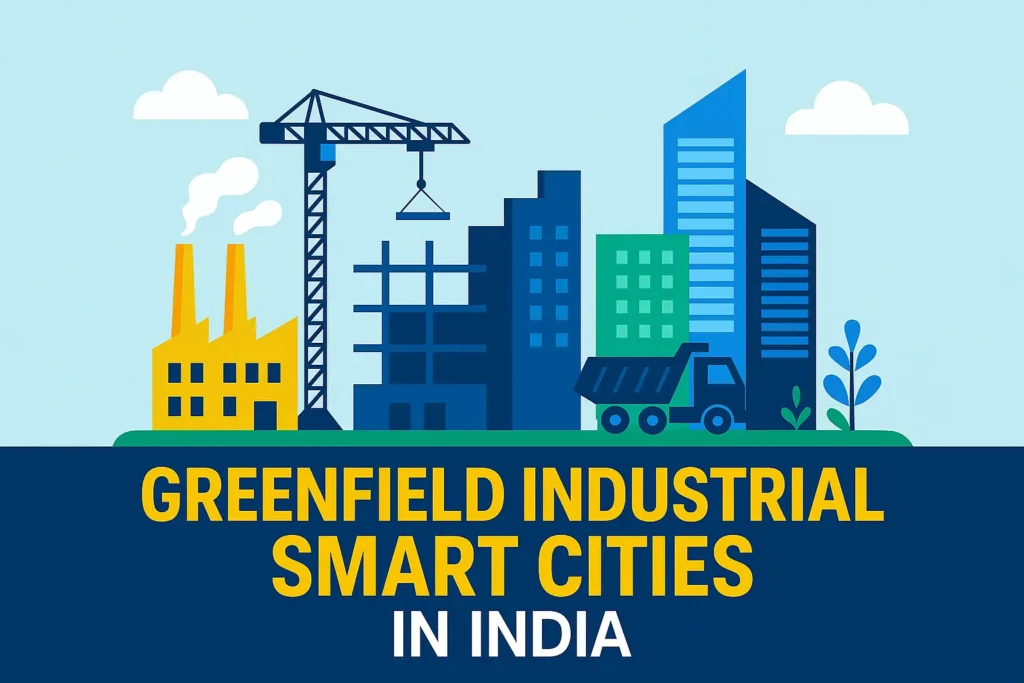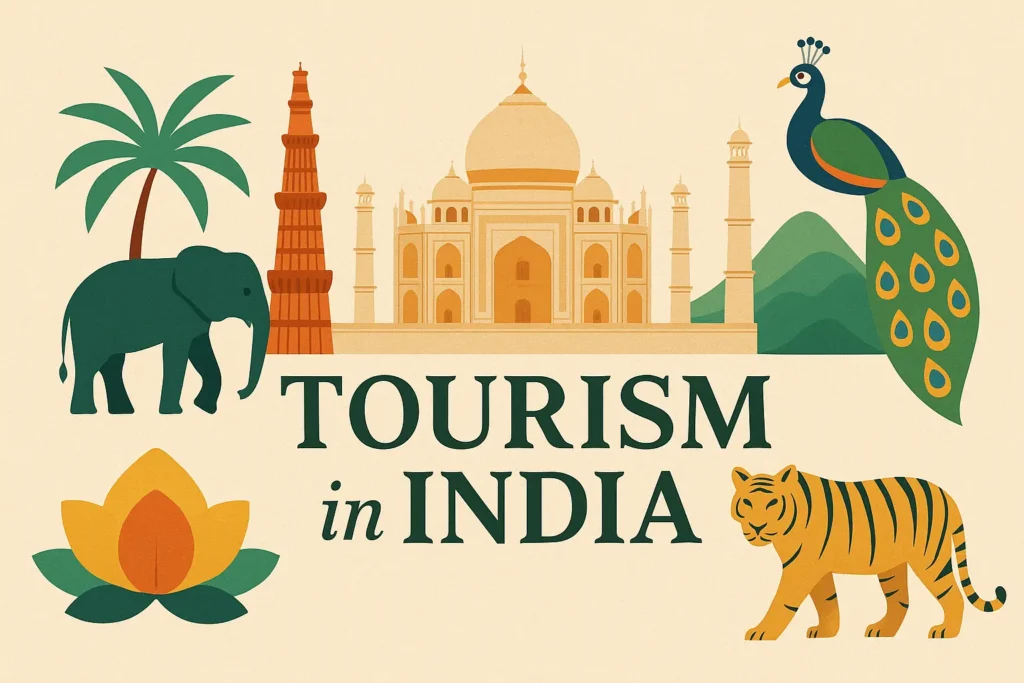Employment in India
Table of Contents
India is one of the fastest-growing economies in the world, and employment generation has become the cornerstone of its growth story. From the rapid rise in jobs and formalisation of the workforce to the government’s ambitious skilling and women empowerment schemes, India is witnessing a historic transformation in its labour market.
This article explains the Employment in India (2025) — complete with data, analysis, and all major government initiatives — in a way that aspirants can understand and explain easily.
Employment in India Overview: India’s Workforce on the Rise
According to the Ministry of Labour & Employment, India’s employment rose sharply from 47.5 crore in 2017–18 to 64.33 crore in 2023–24 — a net addition of 16.83 crore jobs in just six years.
| Indicator | 2017–18 | 2023–24 | Change |
|---|---|---|---|
| Total Employment | 47.5 crore | 64.33 crore | +16.83 crore |
| Unemployment Rate (UR) | 6.0% | 3.2% | ↓ 2.8% |
| Labour Force Participation Rate (LFPR) | 49.8% | 60.1% | +10.3% |
| Worker Population Ratio (WPR) | 46.8% | 58.2% | +11.4% |
Key Highlights of India’s Employment Growth (2023–25)
- Employment increased to 64.33 crore in 2023–24.
- Unemployment rate declined to 3.2%, the lowest in six years.
- 1.56 crore women joined the formal workforce between 2018–25.
- Youth unemployment dropped from 17.8% to 10.2%.
- Average daily wages of casual labourers increased from ₹294 (2017) → ₹433 (2024).
- Average monthly salary for regular workers rose from ₹16,538 → ₹21,103.
Understanding India’s Labour Market: PLFS Data
The Periodic Labour Force Survey (PLFS), conducted by the National Statistical Office (NSO), provides critical data on employment patterns. As per PLFS (August 2025):
- LFPR rose from 54.2% (June) → 55% (August).
- WPR improved from 51.2% → 52.2%.
- Unemployment Rate (UR) fell to 3.2%.
These metrics show a vibrant and recovering labour market, especially in rural areas and among women.
Sectoral Trends: Where India Works
| Sector | Rural Workforce | Urban Workforce |
|---|---|---|
| Agriculture | 44.6% men, 70.9% women | — |
| Industry | 26.3% men, 10.1% women | 26.5% men, 14.6% women |
| Services (Tertiary) | 29.1% men, 19% women | 60.6% men, 64.9% women |
India’s services and digital economy are becoming the biggest job creators, while agriculture continues to employ the largest share of the rural population.
Rise in Formal Employment
- EPFO Subscribers (2024–25): 1.29 crore new members (vs. 61.12 lakh in 2018–19).
- Total since 2017: 7.73 crore subscribers joined EPFO.
- July 2025: 21.04 lakh new joiners (60% aged 18–25 years).
This shows increasing formalisation and better access to social security, pensions, and employment benefits.
Self-Employment and Entrepreneurship Growth
- Self-employment: rose from 52.2% (2017–18) → 58.4% (2023–24).
- Casual labour: declined from 24.9% → 19.8%.
Indicates a shift toward entrepreneurship and independent work, supported by government startup and credit schemes.
Women in the Workforce: From Margins to Mainstream
Women are increasingly driving India’s employment revolution.
| Indicator | 2017–18 | 2023–24 |
|---|---|---|
| Female LFPR | 23.3% | 41.7% |
| Female WPR | 22% | 40.3% |
- Female employment doubled in six years.
- EPFO (2024–25): 26.9 lakh net female subscribers.
- Female WPR (Aug 2025): 32% (up from 30.2% in June 2025).
This growth reflects the success of inclusive schemes like Mission Shakti, Lakhpati Didi, and Namo Drone Didi.
New Employment Drivers: Sectors Fuelling Job Growth
1. Digital & Renewable Economy
India’s digital transformation and green energy expansion are creating millions of jobs in:
- IT & Software
- Fintech
- Renewable Energy (Solar & Wind)
- Logistics, EdTech, and E-commerce
2. Gig and Platform Economy
- Estimated 1 crore gig workers (2024–25) → projected 2.35 crore (2029–30).
- Enabled by Code on Social Security (2020) and e-Shram Portal (31.20 crore workers registered).
3. Startups & Global Capability Centres (GCCs)
- India: 1.9 lakh DPIIT-registered startups, 118 unicorns, and 17 lakh jobs created.
- 1,700 GCCs employ over 2 million professionals, expected to double by 2030.
Key Government Schemes Driving Employment in India
1️⃣ Skill India Mission
- Skill India Mission was launched on 15 July 2025.
- Led by Ministry of Skill Development & Entrepreneurship (MSDE).
- Provides skill, re-skill, and up-skill training.
- Flagship programs:
- Pradhan Mantri Kaushal Vikas Yojana (PMKVY)
- SANKALP & STRIVE Schemes
- PM Vishwakarma Yojana (for artisans & craftsmen)
2️⃣ Rozgar Mela
- Rozgar Mela was launched on 22 October 20222 by Prime Minister Narendra Modi.
- Government organised job fairs under NSDC (MSDE).
- 11 lakh youth placed in the last 16 months.
- Platform connecting job seekers and private employers.
3️⃣ PM Vishwakarma Scheme
- PM Vishwakarma Scheme was launched on 17 September 2023.
- Supports traditional artisans & craftsmen.
- As of Sept 2025: 30 lakh registered, 26 lakh skill verified.
- Offers financial aid, toolkits, and training for scaling businesses.
4️⃣ PM-SETU Scheme
- PM SETU Scheme was launched on 04 October 2025 by Prime Minister Narendra Modi.
- Approved May 2025: Upgrade 1,000 ITIs (200 hubs + 800 spokes).
- Train 20 lakh youth in 5 years through industry-managed clusters.
5️⃣ Employment Linked Incentive (ELI) Scheme
- The Employment Linked Incentive (ELI) Scheme came into effect on August 1, 2025, after being approved by the Union Cabinet on July 1, 2025.
- The scheme, also known as Pradhan Mantri Viksit Bharat Rozgar Yojana (PM-VBRY), was originally announced in the 2024–25 Union Budget.
- Outlay: ₹99,446 crore (FY 2025–32)
- Part A: Incentives for 1.92 crore new employees.
- Part B: Incentives for employees to create 2.59 crore new jobs.
- Aim: Create 3.5 crore jobs in manufacturing in 2 years.
- Encourages formal job creation and skill-based employability.
6️⃣ Mahatma Gandhi National Rural Employment Guarantee Act (MGNREGA)
- The MGNREGAct was enacted in 2005 and the scheme was launched with effect from February 2, 2006, in 200 districts.
- Ensures 100 days of guaranteed wage employment in rural areas.
- Budget FY 2025–26: ₹86,000 crore (highest ever).
Women Employment in India
| Scheme | Objective |
|---|---|
| Namo Drone Didi | Empowers SHG women with 15,000 drones to earn ₹1 lakh/year from agri services. |
| Mission Shakti (Palna) | Provides child-care support, safety, and awareness programs for women workers. |
| Lakhpati Didi | Creates 3 crore women earning ₹1 lakh/year — 2 crore achieved already. |
| Bank Sakhi, Bima Sakhi, Krishi Sakhi, Pashu Sakhi | Promotes financial literacy and income generation among rural women. |
| WISE-KIRAN & SERB-POWER | Encourages women’s participation in STEM, R&D, and higher education. |
Employment Outlook: India’s Workforce of the Future
- Digitally skilled youth, inclusive hiring, and green jobs are shaping the new employment landscape.
- Public-private partnerships and industry-led vocational training are enhancing job-readiness.
- India is emerging as the GCC Capital of the World, with cutting-edge technology jobs and global capability roles.
Quick Revision Notes for Exams
- Total employment (2023–24): 64.33 crore
- Unemployment rate: 3.2%
- Female LFPR: 41.7%
- EPFO subscribers: 7.73 crore (since 2017)
- Key schemes: PM-SETU, PM Vishwakarma, PM-VBRY, ELI, Skill India, Rozgar Mela, MGNREGA, Mission Shakti, Namo Drone Didi, Lakhpati Didi.
FAQs on Employment in India
What is the current employment rate in India (2023–24)?
64.33 crore people are employed in India, as per the Ministry of Labour & Employment.
What is India’s current unemployment rate?
3.2% (2023–24), down from 6.0% in 2017–18.
Which schemes are driving job creation in India?
PM-SETU, PM-VBRY, Skill India, ELI, PM Vishwakarma, MGNREGA, Rozgar Mela, etc.
How many women have joined India’s formal workforce recently?
Around 1.56 crore women in the past seven years.
What is the goal of the Lakhpati Didi initiative?
To enable 3 crore women to earn ₹1 lakh or more per year.
From Skill India to PM-SETU and Mission Shakti, every initiative contributes to a stronger, self-reliant, and globally competitive India.
Source: PIB


